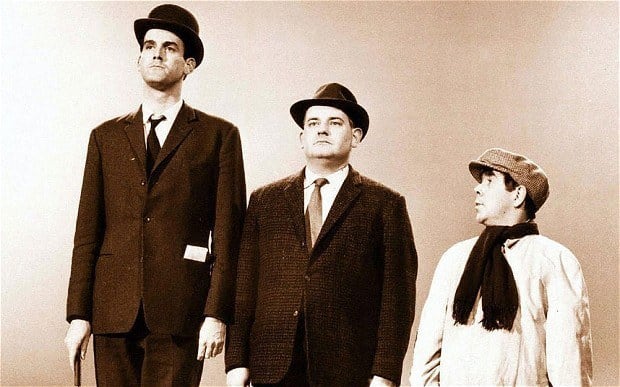Home » Posts tagged 'Journal of Injury Prevention'
Tag Archives: Journal of Injury Prevention
NAPOLEON SYNDROME
October 25, 2017 4:49 am / Leave a comment

Shorter men who attempt to assert or defend themselves are frequently met with the harrowing accusation that they are suffering from ‘Napoleon complex’, otherwise known as ‘short man syndrome.’ While there is some evidence – based both on research and common experience – that this may be the case, the root causes of the issue reveal a problem that is more complex and entrenched than the general public would like to believe.
The term ‘Napoleon complex’ was first coined by Alfred Adler (1870 – 1937) in 1912. Remarkably, however, Napoleon Bonaparte (1769 – 1821), the man for whom ‘Napoleon syndrome’ is named, was not actually short. Napoleon’s personal physician, Francesco Antommarchi (1780 – 1838), recorded the deposed Emperor’s height as being five pieds, two pouces, or five-feet, six-and-a-half inches. This was a half-inch taller than the average Englishman of the time, and a full two inches taller than the average Frenchman. The myth of Napoleon’s short stature comes from two places. First is the fact that Napoleon frequently surrounded himself with men taller than himself. Height requirements specified that the Grenadiers in the Elite Imperial Guard be 5’10 or over, whilst members of the Mounted Chasseurs had to be 5’7. To any casual observer, Napoleon would have looked noticeably smaller by comparison. And second, there is the anti-Napoleonic propaganda that frequently depicted the Emperor as small.
Like many physical characteristics, height can have a profound effect on a person’s self-perception. The shorter man’s poor self-perception begins in childhood when smaller children are often the targets of taunts and ridicule. As adults, shorter men are more likely to be overly-aggressive, domineering, and have an increased proclivity for resorting to extreme measures in order to prove themselves. Unfortunately, research shows that shorter men may, in extreme cases, resort to violence as a means of disguising their insecurities. The Journal of Injury Prevention found that men who struggled with their height and masculinity were three times more likely to commit violent assaults using a weapon. This study, which involved six-hundred American men aged between eighteen and fifty, asked participants to answer two sets of questions. The first asked about their self-image, drug use, and violent behaviour. The second set of questions asked the participants about their beliefs on gender roles, how they felt women and their friends perceived them, how they perceived their own masculinity, and how much they’d like to be a “macho man.”

Taller men are far more likely to succeed in positions of authority and power than shorter men. An early study of height and occupation reveals bishops to be taller than parish priests, sales managers to be taller than salesmen, and university presidents to be taller than the presidents of more modest higher-education facilities. In US Presidential elections, it is typically the taller of the two Presidential candidates that end up winning: John F. Kennedy (1917 – 1963) was six-feet tall compared to Richard Nixon (1913 – 1994) who was five-foot-eleven, Ronald Reagan (1911 – 2004) was six-foot-one compared to Jimmy Carter (1924 – ) who was five-foot-ten, and Barack Obama (1961 – ) was six-foot-one compared to John McCain’s (1936 – ) who was five-foot-nine.
And, as if that isn’t bad enough, merely finding employment can be a struggle for many shorter men. A 2001 study by Nicolo Persico, Andrew Postlewaite, and Dan Silverman of the University of Pennsylvania, found that shorter teenagers had a harder time finding employment than their taller counterparts. Persico, Postlewaite, and Silverman chalked this up to the attitudes and worldview of the shorter teenager. “Those who were relatively short when young”, they explained, “were less likely to participate in social activities associated with the accumulation of productive skills and attributes, and report lower self-esteem.”.
Things don’t get much better once they are employed, either. Shorter men are less likely to be afforded promotions and pay-rises than their taller peers. A study by Leland Deck of the University of Pittsburgh found that men who are 6’2 or taller earn 12.4% more than men who are below six feet.
Then there is the challenge of forming intimate relationships. Men are considered attractive when they are tall, broad-shouldered, and well-toned. An analysis of personal ads found that most women prefer dating men who are six-foot-tall and over, especially when it comes to casual sex. A study published in the March 2016 edition of Personality and Individual Differences journal found that while women did not particularly care about hair, weight, or penis size, they did care about a man’s height. It is believed that the primary reason for this preference is that height is a sign of high testosterone – and men with higher testosterone tend to be better protectors and lovers.
There is plenty of evidence to suggest that height is a source of great insecurity for many men. The shorter man’s sense of insecurity and resentment is almost certainly borne out of poor experiences associated with their stature. Smaller children are more likely to be the victims of taunts and ridicule. As adults, shorter men find it more difficult to form intimate relationships, find employment, and achieve positions of authority and status. Perhaps people ought to remember that Napoleon Complex is more complicated and entrenched than they like to believe.
